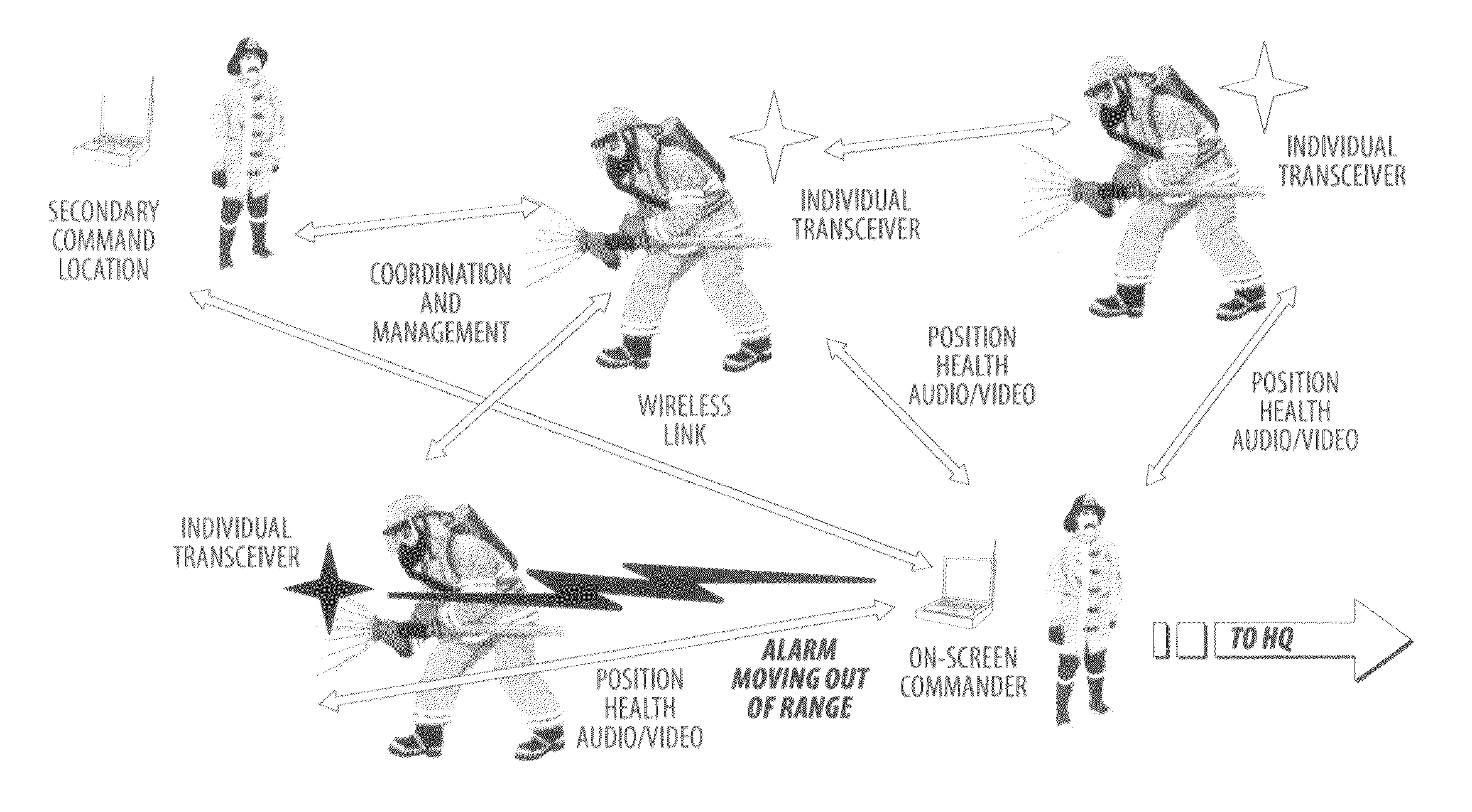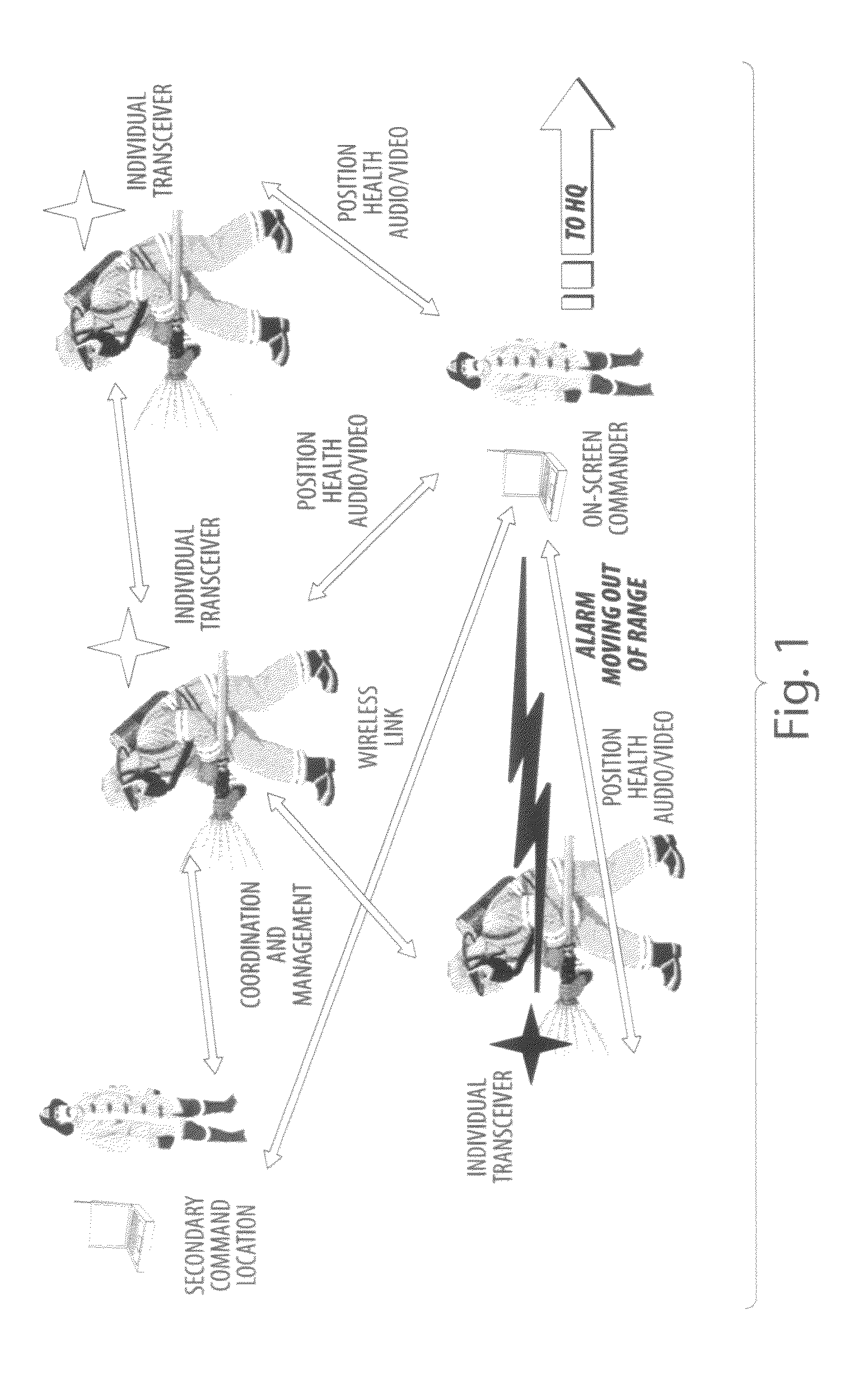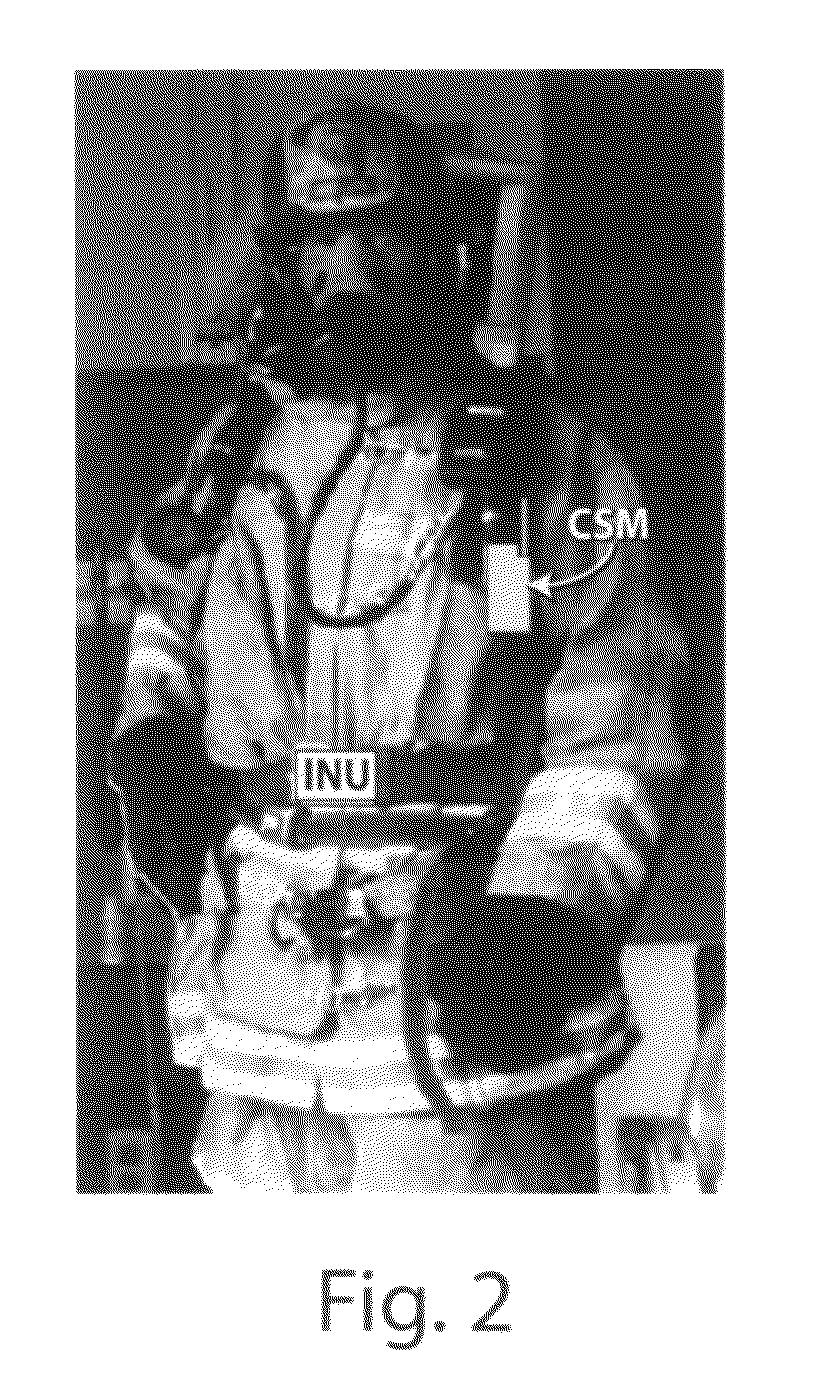Method and system for locating and monitoring first responders
a technology for first responders and monitoring systems, applied in traffic control systems, navigation instruments, instruments, etc., can solve the problems of limited accuracy of public gps, gps may not operate indoors, and gps operation and accuracy can be further limited, so as to reduce the number of tracking errors of any single data set or sensor
- Summary
- Abstract
- Description
- Claims
- Application Information
AI Technical Summary
Benefits of technology
Problems solved by technology
Method used
Image
Examples
Embodiment Construction
[0061]The present invention can be an integrated solution as shown diagrammatically in FIG. 1. The present invention can provide location and tracking, two-way communications, and data management functions. It can be an open system that can be tailored to a wide variety of applications—for example, applications directed to location, tracking, and status monitoring of personnel and / or assets. As such, in addition to tracking of first responders, it can be adapted to a variety of applications and can be expanded to meet a wide range of requirements, such as location and tracking of people and / or assets in campus environments, VIP status and monitoring, and blue force applications.
[0062]The systems and methods according to the invention can be used to enable an Emergency Incident or Situation Commander to monitor (for example, remotely from a safe distance) the location, vital signs, and other situational information of first responders including firefighters, police, EMS technicians, ...
PUM
 Login to View More
Login to View More Abstract
Description
Claims
Application Information
 Login to View More
Login to View More - R&D
- Intellectual Property
- Life Sciences
- Materials
- Tech Scout
- Unparalleled Data Quality
- Higher Quality Content
- 60% Fewer Hallucinations
Browse by: Latest US Patents, China's latest patents, Technical Efficacy Thesaurus, Application Domain, Technology Topic, Popular Technical Reports.
© 2025 PatSnap. All rights reserved.Legal|Privacy policy|Modern Slavery Act Transparency Statement|Sitemap|About US| Contact US: help@patsnap.com



